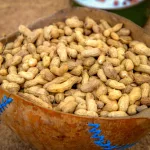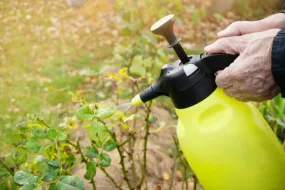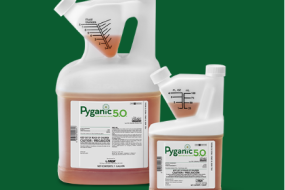Hey there, fellow horse enthusiasts! If you’re a horse owner or simply passionate about these majestic creatures, you’ve probably heard of Vesicular Stomatitis (VS). This contagious disease can send shockwaves through the equine community, affecting the health and well-being of our four-legged friends. In this article, we’ll take a deep dive into understanding Vesicular Stomatitis in horses, from its causes and symptoms to the most effective treatments. So saddle up, and let’s get started!
What is Vesicular Stomatitis?
Vesicular Stomatitis, often abbreviated as VS, is a viral disease that primarily affects horses, as well as other livestock such as cattle and swine. It’s a contagious condition characterized by the development of vesicles or blisters on the mucous membranes of the mouth, nose, and sometimes the hooves and teats. These vesicles can be painful and disrupt a horse’s normal eating and drinking habits.
Also Read >>>>>Discover The Causes, Symptoms, and Treatment of Vesicular Stomatitis in Humans
Causes of Vesicular Stomatitis
Understanding the causes of Vesicular Stomatitis is crucial for prevention. VS is caused by a group of viruses known as the Vesicular Stomatitis Viruses (VSV), which are part of the Rhabdoviridae family. These viruses can infect a variety of animals, but horses are particularly susceptible. The exact source of these viruses is often unclear, but they are believed to be transmitted through:
Insect Vectors:
The primary mode of transmission is through biting insects like black flies, sandflies, and midges. These insects can carry the virus from infected animals to healthy ones.
Direct Horse-to-Horse Contact:
VS can spread through direct contact with the saliva or nasal discharge of infected horses.
Contaminated Equipment:
Sharing equipment like feed buckets, water troughs, or grooming tools can also facilitate the spread of the virus.
Contaminated Environment:
The virus can survive in the environment for a limited time, so contaminated pastures or stables can pose a risk.
Symptoms of Vesicular Stomatitis
Recognizing the symptoms of Vesicular Stomatitis is essential for early detection and containment. The signs of VS in horses can vary but often include:
Oral Lesions: The most characteristic symptom is the appearance of painful blisters or ulcers on the lips, gums, tongue, and the inner lining of the cheeks.
Excessive Drooling: Horses may produce more saliva than usual due to the discomfort caused by the oral lesions.
Fever: A sudden increase in body temperature is common, often exceeding 102 degrees Fahrenheit.
Lethargy: Infected horses may appear sluggish and less active than usual.
Lameness: In some cases, the virus can affect the hooves, leading to lameness.
Loss of Appetite: Due to the painful mouth sores, horses may refuse to eat or drink.
Teat Lesions: In mares, you might notice lesions on their teats, which can be a sign of VS.
Remember that the severity of symptoms can vary from horse to horse, with some experiencing mild signs while others may become seriously ill.
Also Read >>>>>Discover The Causes, Symptoms, and Treatment of Vesicular Stomatitis in Humans
Diagnosis and Treatment:
If you suspect that your horse has Vesicular Stomatitis, it’s essential to contact your veterinarian immediately. Diagnosing VS typically involves laboratory tests on samples collected from the oral lesions or blood.
Treatment for Vesicular Stomatitis primarily focuses on supportive care. Since it’s a viral infection, there’s no specific antiviral treatment available. Here’s how you can help your horse recover:
Isolation: Isolate the infected horse to prevent the spread of the virus to others.
Pain Management: Your vet may prescribe pain relievers to alleviate the discomfort caused by oral lesions.
Fluids: Ensure that the horse stays hydrated, especially if it’s reluctant to drink due to mouth sores.
Nutrition: Soft, easily chewable food can help the horse maintain its weight and energy levels.
Environmental Management: Keep the horse in a clean and comfortable environment to prevent secondary bacterial infections.
Vector Control: Implement measures to control biting insects and reduce the risk of further transmission.
Most horses recover from Vesicular Stomatitis within a few weeks, but it’s crucial to follow your veterinarian’s guidance to ensure a full and safe recovery.
Also Read >>>>>Discover The Causes, Symptoms, and Treatment of Vesicular Stomatitis in Humans
Preventing Vesicular Stomatitis:
Prevention is the best defense against Vesicular Stomatitis. Here are some steps you can take to protect your horses:
Insect Control: Use fly masks, repellents, and other insect control measures to minimize exposure to potential vectors.
Quarantine New Horses: Isolate new arrivals on your property for at least 21 days to ensure they are not carrying the virus.
Biosecurity: Practice good biosecurity measures, such as regularly disinfecting equipment and limiting contact between horses.
Vaccination: While there’s no specific vaccine for VS, keeping your horses up-to-date on their general vaccinations can help boost their immune system.
Travel Precautions: If you attend events or transport your horses, be cautious in areas where Vesicular Stomatitis has been reported and follow event organizers’ guidelines.
Conclusion
Understanding Vesicular Stomatitis in horses is vital for horse owners and enthusiasts alike. By knowing its causes, symptoms, and treatments, we can take proactive measures to protect our equine friends from this contagious disease. Remember, early detection and proper care are essential for a horse’s recovery, so always consult your veterinarian if you suspect any signs of Vesicular Stomatitis. Let’s keep our horses happy, healthy, and horsin’ around for years to come!
Also Read >>>>>Discover The Causes, Symptoms, and Treatment of Vesicular Stomatitis in Humans












One reply on “Understanding Vesicular Stomatitis in Horses The Causes, Symptoms, and Treatment”
[…] Also Read >>>Understanding Vesicular Stomatitis in Horses The Causes, Symptoms, and Treatment […]